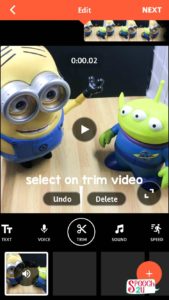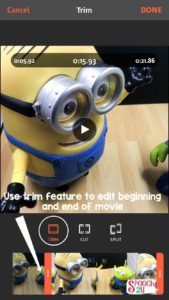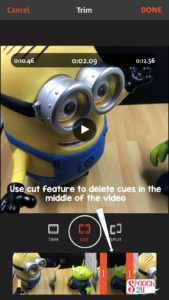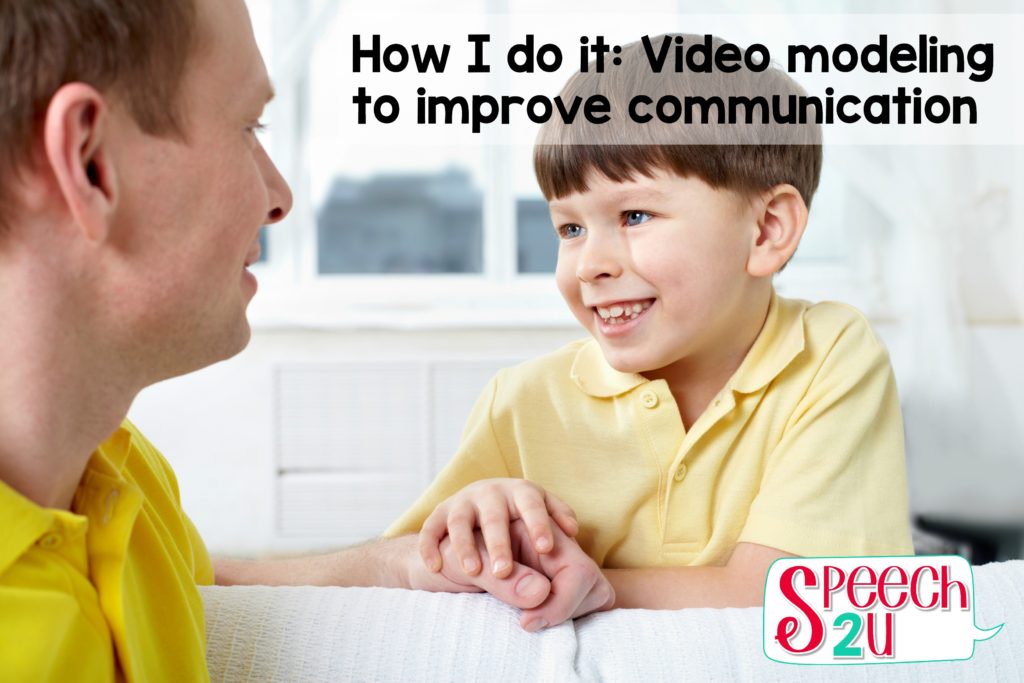Have you used video modeling in therapy before? My first job was working with developmentally disabled adults at a community work site. We had a gigantic video camera that we would use to film expected or unexpected social interactions. My clients loved to watch the videos of the wrong behavior. It was pretty funny and motivating for them. Turns out, I was doing it wrong. There can be a benefit in identifying incorrect behaviors, but video modeling is most successful when we video what we want the client to do or say.
It reminds me of a child that I worked with years ago who had some pretty intense escape and attention seeking behaviors. Her parents mentioned that there favorite shows to watch were super nanny and cops. Super Nanny is filled primarily with examples of children being “naughty,” and I’m guessing that the behavioral strategies went over this child’s head.
Video modeling is a unique strategy to facilitate a client’s independence and success. One of the most effective ways to use video modeling is to video a student or client using a desired behavior. For instance, I might use video modeling to train independent answering of personal information questions.
Video Modeling and Answering Questions
Maybe we are working on introductory conversations and answering basic personal information questions. The student is not yet independent in answering, so I need to prompt them through it. In this example, I am going to give maximum verbal cues as we are filming to get the correct responses.
- Clinician: What’s your name? (Immediate verbal prompt say John)
- Client: John
- Clinician: How are you today? (Say I am great!)
- Client-I am great.
- Clinician-how old are you (say 8)
- Client: 8
Now that I’ve filmed the video, I can use simple video editing software to remove the cues that I used. I can send the video home for my client to watch and they can watch themselves successfully completing this new skill. Video editing sounds scary-but it is pretty easy to do.
Video Modeling and Play
Have you ever thought of filming “how” to play with a toy or “how” to play a game? We can remove environmental distractions and show a child with autism how to put together a train set or other activity. I think about the popularity of “unboxing” videos on YouTube. Reviewers open boxes of toys, set them up and talk about the toy.
Choose toys that the child has access to. Provide a video of the toy being assembled and potentially ideas for how you would talk while you are playing with the toy.
Frequency of watching the video?
Video Modeling and Conversations
It’s easier to focus on answering questions but the important skill to teach in conversations in initiation and asking questions I think. In pivotal response therapy, they teach a simple conversational structure:
- Asked a question: How was your day at school?
- Answer provide two statements . It was great, I played in gym and read a story.
- Ask a return question. How was your day?
You could use this structure for a variety of common conversations.
Creating and Editing Videos
It continues to get easier to create your own videos just using your phone. If you have an iPhone you could use iMovie to create. I use an app called Videoshop which I find to be a little bit more user friendly. I’d make sure that you have some sort of video release from the family and a plan for how you will share the video-especially if you are in a clinic setting where you need to follow HIPPA guidelines.
This is a video that I was able to take and edit within about 20 minutes. My voice is super creepy in this video-but for the sake of showing how you can create a video like this in less than 30 minutes, I stopped myself from going back and re-creating it.
Here is the initial video before I started editing it:
Trimming Videos:

After recording the video, I open it up on my phone using a video editing app. If you have an iPhone you could use iMovie to create. I use an app called Videoshop which I find to be a little bit more user friendly. I’d make sure that you have some sort of video release from the family and a plan for how you will share the video-especially if you are in a clinic setting where you need to follow HIPPA guidelines.
There are a variety of editing options. I’m usually trying to get these done as quickly as I can, so I generally use the trim feature. If your client or student is a reader, I might consider adding text to the videos as an extra cue.

I start by trimming the extra content at the start and end of the video. The whole video is playing on top, I just slide the red bar over to where I want the video to start and click finish.

Video shop makes editing cues out of the middle of your movie, really simple. Select the cut feature, and adjust the red bars at the beginning and end of your cues to remove. Once you are finished trimming your video, you select finish and the final movie will play.
Here is the final movie (creepy voice and all) with my cues edited out:



